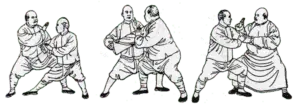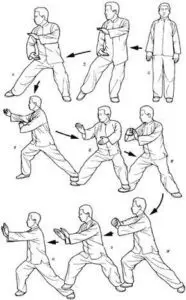Qigong: A Time-Honored Path to Holistic Wellness
 Dating back over 3000 years, Qigong stands as a venerable pillar of Chinese health practices, weaving together breath control and physical movement to foster mental, emotional, and physical harmony. Rooted in Traditional Chinese Medicine and Martial Arts, its primary focus lies in the realm of preventative health care.
Dating back over 3000 years, Qigong stands as a venerable pillar of Chinese health practices, weaving together breath control and physical movement to foster mental, emotional, and physical harmony. Rooted in Traditional Chinese Medicine and Martial Arts, its primary focus lies in the realm of preventative health care.
The term “Qigong” finds its essence in its literal translation, meaning “breath work” in Chinese. “Qi,” representing air or breath, symbolizes the vital energy coursing through the body, while “gong” conveys the notion of disciplined practice or self-cultivation. Qigong thus emerges as the disciplined study dedicated to harnessing and mastering Qi, a journey demanding both time and effort.
In the Western sphere, the recognition of Tai Chi and Qigong’s profound health benefits is a relatively recent development. Researchers worldwide are delving into scientific studies to unravel the mysteries surrounding Traditional Chinese Medicine and Chinese Health Systems. While the empirical evidence of these practices’ positive impact on health and wellbeing is clear, the underlying mechanisms remain somewhat elusive. It is an ongoing endeavor to unveil the intricacies behind such remarkable outcomes.
Meanwhile, the enduring quest to fortify and nurture the body’s Qi has been a focal point of health seekers in China for centuries. In Traditional Chinese Medicine, the unimpeded flow of Qi along the body’s meridians is paramount to one’s health and vitality. Illnesses are often attributed to disruptions or blockages in Qi flow, forming the basis for acupuncture and Qigong practices. The ability to cultivate and regulate Qi flow within the body becomes instrumental in enhancing health and resilience against ailments.
Qigong’s benefits are manifold, ranging from heightened vitality to alleviating medical conditions and enhancing overall quality of life. Regular practice yields improvements in muscular efficiency, coordination, breathing patterns, blood circulation, flexibility, and internal harmony. Moreover, studies suggest a bolstered immune system as a result of consistent Qigong practice.
The ancient Taoist and Buddhist traditions celebrated the art of harmonizing with natural energies, advocating for an easygoing yet pragmatic approach to life’s challenges. In this vein, they crafted refined Qigong systems of meditative movement to attune with nature’s rhythms, cultivate energy, and, at its pinnacle, attain spiritual enlightenment.
Qigong encompasses two primary categories: tranquil and dynamic. While tranquil Qigong appears still on the surface, it induces internal movement of Qi. On the other hand, dynamic Qigong involves more vigorous movements while maintaining inner tranquility. Taijiquan, often dubbed Dynamic Qigong, embodies this dynamic interplay between stillness and movement, fostering a holistic integration of internal and external activity.
Today, within the realms of Chinese health and medical sciences, Qigong shines brightly as a cherished gem within Traditional Chinese Medicine. It has served as a beacon of healing for countless individuals grappling with severe and chronic health issues, transcending geographical boundaries to become a cherished practice worldwide.






